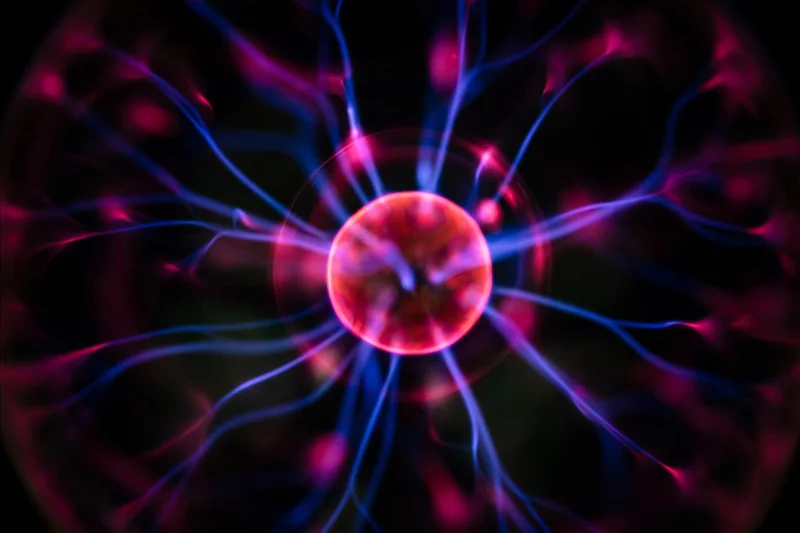The Sub-$1 Hydrogen Promise: Deconstructing the AI-Driven Breakthrough The...
2025-10-05 11 Plasma
The word “plasma” appeared in four distinct contexts in my feed over the last week. This is not, in itself, unusual. The term is broad, describing everything from a state of matter to a biological fluid. What is unusual is the profound disconnect in how the word is being defined, engineered, and, most importantly, valued across these contexts. The data points, when laid side-by-side, paint a picture of a market that has become exceptionally good at pricing narrative and exceptionally poor at pricing physical reality.
It began, as it often does, with an anomaly. On Tuesday morning at 12:14 a.m., observers across Wyoming watching an intense aurora were treated to something else entirely. A brilliant, super-heated ribbon of light tore across the sky. Eyewitness Andrea Cook described it as an “unholy bright” searchlight. This was not an aurora. It was a Strong Thermal Emission Velocity Enhancement, or STEVE—a narrow band of plasma with a temperature of 5,430 degrees Celsius, appearing at an altitude of 280 miles. It is a rare, naturally occurring phenomenon, scientifically fascinating and, in an economic sense, entirely without value. It is simply a physical fact.
In another context, plasma is not just a fact but a target. At Zap Energy, engineers are working to tame it. Their Century fusion test platform is designed to replicate the conditions of a commercial power plant. It does this by discharging pulses of electricity—up to 500 kiloamps, roughly 20 times the current of a lightning bolt—into a puff of hydrogen gas, creating an extremely hot, dense filament of plasma. The goal is to generate and contain this state of matter to produce clean energy. This is a systems integration problem of immense complexity, a long-term, high-capital project predicated on the eventual realization of a multi-trillion-dollar energy market. Here, plasma is a physical asset in development, its value theoretical but grounded in the laws of physics and engineering.
The Abstract Asset
Then there is the third plasma. This one has no temperature, no mass, no physical presence at all. It is a layer-1 blockchain network, optimized for stablecoin transactions, that launched last week. Its native token, XPL, soared 87% within three days to a market capitalization of $3.3 billion. The network, which calls itself Plasma, launched with an unprecedented $2 billion in stablecoin liquidity. On-chain data confirms significant pre-launch accumulation by large holders, or "whales," with one such entity reportedly realizing a profit of $80.15 million in the initial surge.
This valuation is not based on a physical product or a solved engineering problem. It is based on a narrative. The network’s core meme is “trillions,” a reference to a prediction that the total stablecoin market cap will one day reach trillions of dollars. The narrative is so potent that a meme coin called "Trillions," created on the Plasma network, briefly achieved a market capitalization of $60 million before collapsing to $18 million. The discrepancy between the initial hype and the subsequent fall is not seen as a failure, but as a feature of the market.
I've analyzed hundreds of market launches, and a day-one liquidity of $2 billion backed by coordinated whale accumulation isn't a signal of organic, grassroots adoption. It is a signal of a highly capitalized, top-down market entry designed to generate momentum. The valuation is a function of capital flow and sentiment, not utility in the traditional sense. The "Plasma" name is a brand, an empty signifier onto which a multi-billion dollar valuation has been projected.

This brings us to the fourth plasma, the one that carries the most immediate consequence. Last week, 3M Company issued an “Urgent Medical Device Correction” for its Ranger Blood/Fluid Warming System. This is a device used in clinical settings to warm fluids, including the very blood plasma that is the liquid matrix of our circulatory system. The substance, often sourced through plasma donation at a plasma center like CSL Plasma or Biolife, is vital for trauma care. The function of the 3M device is to warm this plasma in blood from storage temperatures to body temperature before transfusion, preventing hypothermia.
The reason for the recall—which the FDA has identified as its most serious type—is a critical discrepancy between labeled performance and actual capability. The device was marketed as being able to warm fluids at flow rates up to 500 mL/min. However, testing revealed it can only maintain the required temperature at significantly lower rates: 333 mL/min for room-temperature fluids, and just 167 mL/min for refrigerated fluids (like blood products).
This is not a minor variance. For fluids at 4°C, the device underperforms its labeled specification by more than 60%—to be more exact, by 66.6%. In a trauma setting where rapid transfusion is critical, this failure of precision is not an abstraction. It has direct, physical consequences, with the FDA noting the potential for serious injury or death from hypothermia. The entire recall is based on a failure to meet a precise, physical metric. The value of the device is tied directly to its measurable, verifiable performance. (The correction is an update to the instructions, not a removal of the device from hospitals.)
So we are left with four plasmas. A celestial plasma, beautiful and worthless. A fusion plasma, a potential source of immense future value, currently a monumental engineering cost. A digital plasma, an abstract brand attached to a token valued at over $3 billion based on narrative and capital deployment. And a biological plasma, whose safe handling depends on a device that failed because of a 67% deviation from its performance specification.
In the world of hard science and medicine, a two-thirds failure rate is a catastrophic, life-threatening event. In the world of speculative digital assets, a 70% drop from a peak for a meme coin built on a network named for a physical concept is simply the cost of doing business. The same word connects them, but the standards of accountability and the definition of value could not be further apart.
###
The core discrepancy revealed here is not about technology, but about accountability. Our current market mechanisms are capable of assigning a $3.3 billion valuation to an abstract narrative in less than 72 hours. Yet, those same mechanisms can overlook a 67% performance failure in a physical, life-saving device until it requires regulatory intervention. We have become experts at pricing speculation while systematically underpricing the tangible world's demand for precision. One world trades in memes and momentum; the other deals in millimeters and milliliters. The data suggests we are far better at valuing the former, with consequences we have yet to fully reckon with.
Reference article source:
Tags: Plasma
Related Articles

The Sub-$1 Hydrogen Promise: Deconstructing the AI-Driven Breakthrough The...
2025-10-05 11 Plasma

They're Calling Everything 'Plasma' Now, and It's Just as Confusing as You'...
2025-10-02 13 Plasma